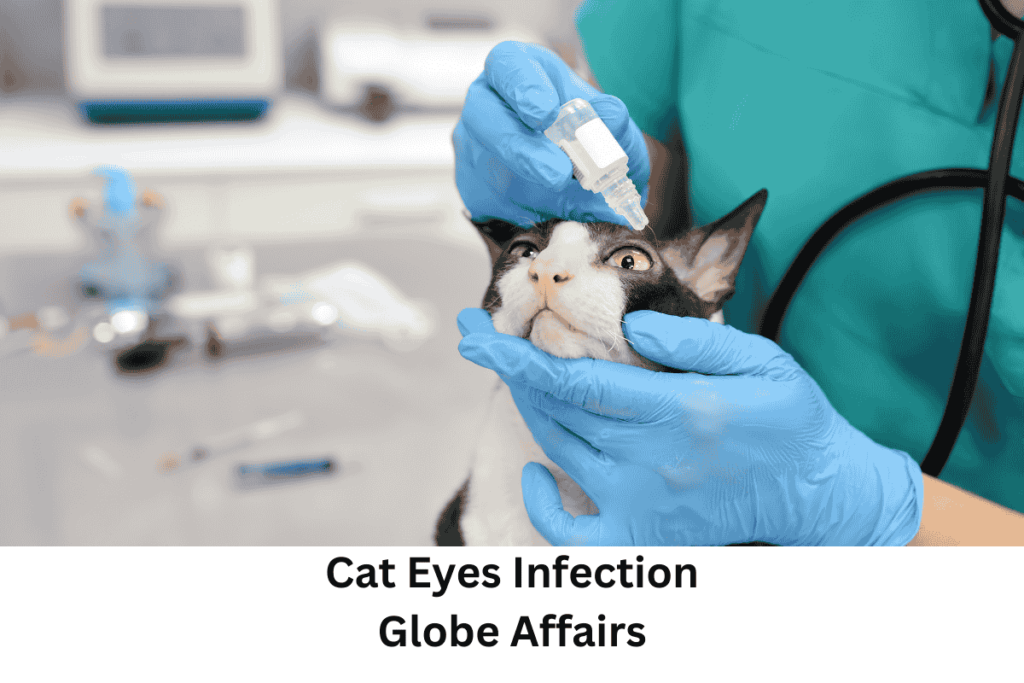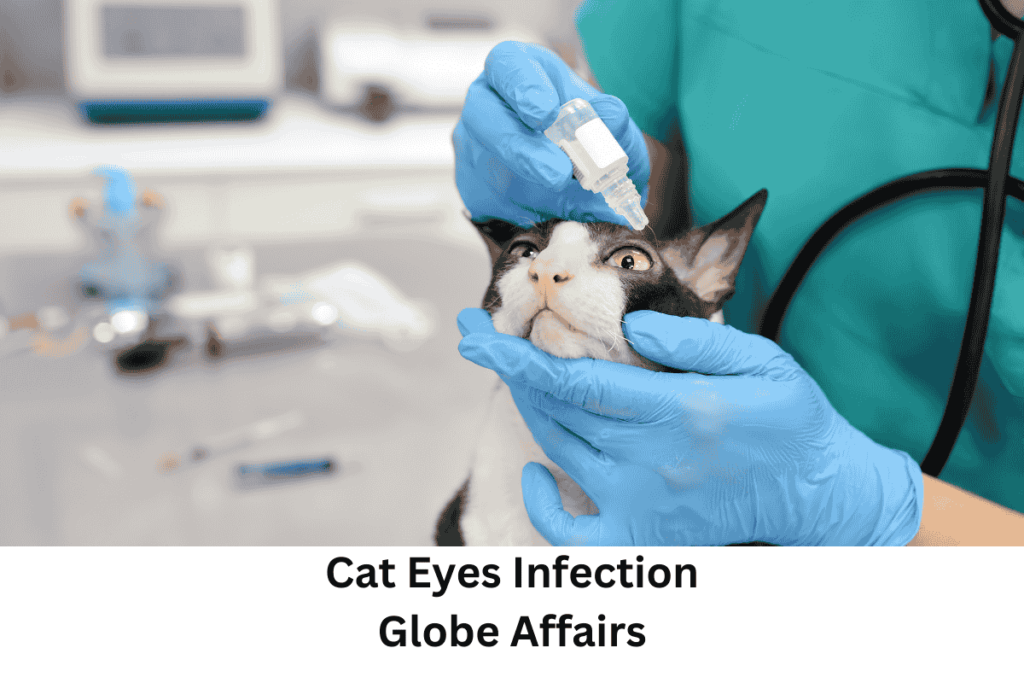In contrast, an eye-infected cat is a much bigger acute problem to the householder, as the eye becomes painful and ugly and the cat may go beserk. Some infections are mild and can be treated at home; others may mean a trip to the vet. Cat eye infections can range from bacterial or viral infections to injuries or more serious underlying conditions. Therefore, these issues can exhibit itself as swelling or inflammation, making the visual system annoying and occasionally painful with physical signs. Minor irritation, such as some mild reddening, might need to be flushed gently at home, using a damp washcloth, while persistent signs or emerging symptoms call for a trip to a vet. And to prevent the symptoms from coming back, make sure you keep your cat’s environment clean and free of all irritants beacuse this way you will be keeping your cat save from other issues too.

Top 6 Home Remedies For Cat Eye Infection
Exclusively Salty Solution (Saline Cleanse)
- In 1 cup warm water, add ¼ teaspoon salt.
- Gently clean discharge and debris with a clean cotton pad.
- Repeat 2-3 times a day to clear the eyeballs.
Chamomile Or Green Tea Compress
- Brew chamomile or green tea, let it cool down, then soak a cotton pad in it.
- It is also helpful to press the pad of cotton in the infected eye for a few minutes because it will help to move the swelling inside the body.
- Chamomile has natural antibacterial and sedative effects too.
Coconut Oil Drops
- Insert a single drop of pure organic virgin coconut oil into the infected eye.
- This may also help with small infections, too, because coconut oil is naturally an antimicrobial.
Apple Cider Vinegar (For Immune Support — Not Direct Eye Use)
- Mix 1 teaspoon raw apple cider vinegar in 1 cup water.
- Soak a clean cloth in the solution and gently wipe your cat’s neck or pads on the bottom (and make sure to avoid wiping around the eye).
- It may help strengthen immunity as your cat grooms.
Steam Therapy for Congestion
- If your cat has a respiratory related eye infections, have your cat sit in the bathroom with you running the shower on hot for 10 minutes.
- The vapors also relieve nasal congestion and help the eyes relax.
Cleaning with Aloe Vera Gel
- Lightly rub a dab of plain aloe vera gel (no preservatives) around the eye.
- Aloe vera is soothing, but has antibacterial properties, too.
Important Notes:
🚫 Don’t ever give your cat eye drops/medication that is prescribed for humans.
🚫 Avoid essential oils — especially those that are toxic to cats
⚠️ Call your veterinarian first if symptoms are more severe or aren’t improving in 24–48 hours.
These are temporary solutions; serious infections require expert care.
What Kind of Eye Infections Do Cats Get?
Types of eye infections in cats
- Conjunctivitis: The commonest disease in the cat is conjunctivitis which literally means (conjunctivinfection) inflammation of the conjunctiva the thin tissue are under the eyelid and the white of the eye. Viral, Bacterial or Allergy Reaction
- Keratitis: The second form of eye infection is keratitis (inflammation of the cornea, the clear outer covering of the eye). They can happen in response to infections, trauma or irritants, or occur as features of underlying medical conditions. The middle layer of the eye, the uvea — consisting of the iris, ciliary body and choroid — can be inflamed for various reasons, including infection, autoimmune disease, trauma or systemic illness. Symptoms: redness over eye, pain in eye, light sensitivity, blurred vision, change in color of iris.
- Corneal ulcers : These are open sores of the transparent layer of the eye and they are usually caused by trauma or infections, or pre-existing eye conditions. They are hugely irritating and excessive tearing and redness of cats’ eyes.
- Blepharitis: Narrowest Point eyelid annoyance (the blepharitis) is an annoyance response a result of a bacterial ailment, an hypersensitive response or a different health issue. You might notice that the cat’s eyelid is swollen and red. Well, additionally all are swelling signs, redness, symptoms around the eye and once all the embarrassment.
Causes of Infections in Cats Eye
- Infectious: Type of bacteria or virus infecting the eye Common culprits include:
- Bacterial infections: Chlamydia, Mycoplasma, and Staphylococcus
- Diseases caused by virus : Feline herpesvirus (FHV-1) feline calicivirus.
- These infections can cause redness, swelling and, in some cases, pus or discharge from the eyes.
- Non-infectious maladies: These don’t result from bacteria or viruses but can nonetheless inflame, and inflame, the eye. Common causes include:
- Allergies (immune system reactions)
- Tumors (abnormal growths)
- Damage (such as scrapes, trauma or debris, e.g.: grass seed, sand, staples)
Both conditions are painful and may require treatment by a vet.
Symptoms that Cat Eye Could Get Infection
- Redness in the eyes
- Eye Discharge (empty clear, yellow or green)
- Unsual blinking frequency, winking or squint
- Rubbing or pawing at the eyes multiple times
- Swelling around the eyes
- Water Discharge that is yellowish-greenish (watery or thick) (may be conjunctivitis)
- Crusting around the eyes
- Third eyelid Covering part of the eye
Early detection is crucial, as untreated infections can lead to complications and discomfort for your cat.
Can You Prevent Eye Infections in Cats?
- Vaccinate your cat — Make sure your cat is up-to-date on his or her vaccines for viral infections.
- Regular vet check-ups — Regular wellness checks can detect and prevent eye infections before they become serious.
- Safe zone- Get rid of sharp toys, thorny plants and other potential hazards to the eyes.
- Watch for eye health — Look for soreness, swelling or discharge and address it right away.
- Home care for mild cases — Clean minor eye irritations with a damp cloth.
- So if in doubt always seek veterinary advice — Any symptoms you notice worsening (for instance pain, swelling or excessive discharge) do not delay contacting a veterinarian.
Some early detection and care ensure that small things don’t become big ones
